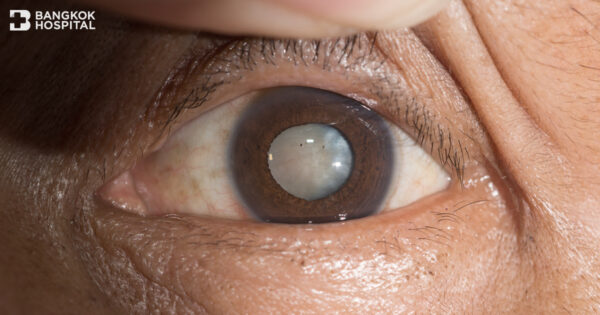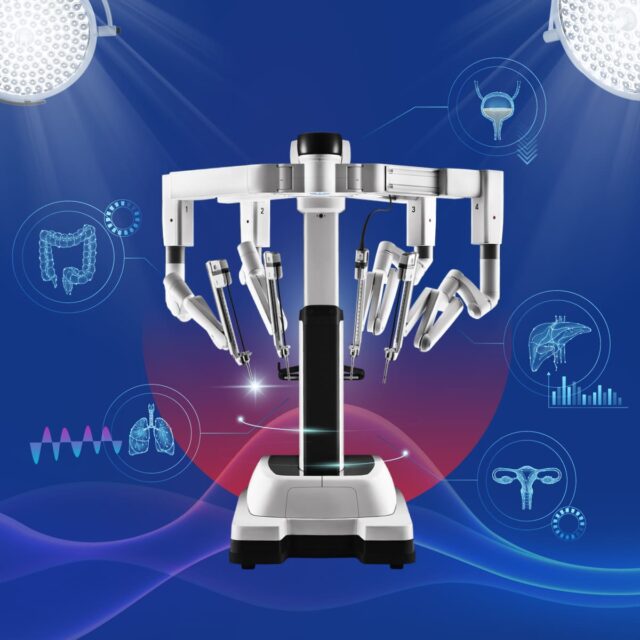Understanding Cataracts
Cataracts are a condition where changes occur that cause the “eye lens” to become cloudy. Normally, the eye lens is clear and helps to focus light precisely onto the retina. When cataracts occur, it prevents light from entering the eye normally, leading to blurred vision or the symptom of cloudy eyes. It is commonly found in elderly people.
Causes of the Disease
Cataracts result from the degradation of proteins, which are components of the eye lens, causing the lens to become cloudy and hard. This is usually found in individuals who are 50 years old and above. The main cause is age-related degeneration, which is associated with increasing age. However, it can also be found in younger age groups, such as congenital anomalies from mothers infected with rubella during pregnancy.
Other causes of cataracts
- Long-term exposure to ultraviolet radiation
- Having chronic illnesses that promote the development of cataracts, such as diabetes, thyroid dysfunction
- Eye diseases, such as uveitis, eye infections, very high myopia, previous eye surgeries, for example, after retina surgery
- Long-term use of steroids
- Previous eye injuries or frequent traumas to the eyes
- Use of steroid medications
- Prior exposure to radiation in the upper body or head
Symptoms of cataracts
- Gradually becoming blurrier without inflammation or pain, seeing as though through a fog or mist, varying with the level and location of the cloudiness in the lens substance
- Double vision, blurry vision due to uneven cloudiness of the lens, resulting in light being scattered rather than focused on the retina. In some patients, nearsightedness may progressively worsen, requiring frequent changes in glasses, with some eventually being able to read without glasses
- Glare sensitivity, seeing scattered light, especially while driving at night
- Colors appear distorted, needing more light for vision
- When the cataract matures, it may appear white in the pupil, which is normally seen as black. Ignoring it until the cataract is overly mature can lead to complications, such as glaucoma, inflammation inside the eye, potentially resulting in eye pain, red eyes, and possibly loss of vision
Treatment for Cataracts
In the early stages of cataracts, changing glasses may help improve vision somewhat. There are no eye drops or oral medications that can cure cataracts. When vision becomes significantly impaired, the only treatment is surgery.
For more information click Cataract Surgery and the Different Types of Artificial Intraocular Lenses
Cataract Surgery
1) Phacoemulsification with Intraocular Lens method
The most popular method currently, involving only a small 3 mm incision in the cornea. The doctor inserts a device to emulsify the cataract using high-frequency energy equivalent to ultrasound level, then an artificial eye lens is placed. The incision is very small and does not require stitches in most patients.
2) Open incision cataract surgery (Extracapsular Cataract Extraction with Intraocular Lens)
The traditional surgery method used in cases where the cataract is mature and very hard, unsuitable for emulsification. The ophthalmologist will make an incision around 10 mm long at the top half of the eyeball to remove the lens affected by the cataract, then an artificial intraocular lens is inserted, followed by stitching the incision closed.
Preventing Cataracts
- Wear sunglasses to protect against ultraviolet radiation
- Eat nutritious foods, especially those rich in vitamins A, E, and C, to nourish the eyes. However, taking vitamin supplements has no clear evidence of reducing the risk of cataracts.
- It is recommended to have regular eye check-ups every year, especially for those aged 40 and above











